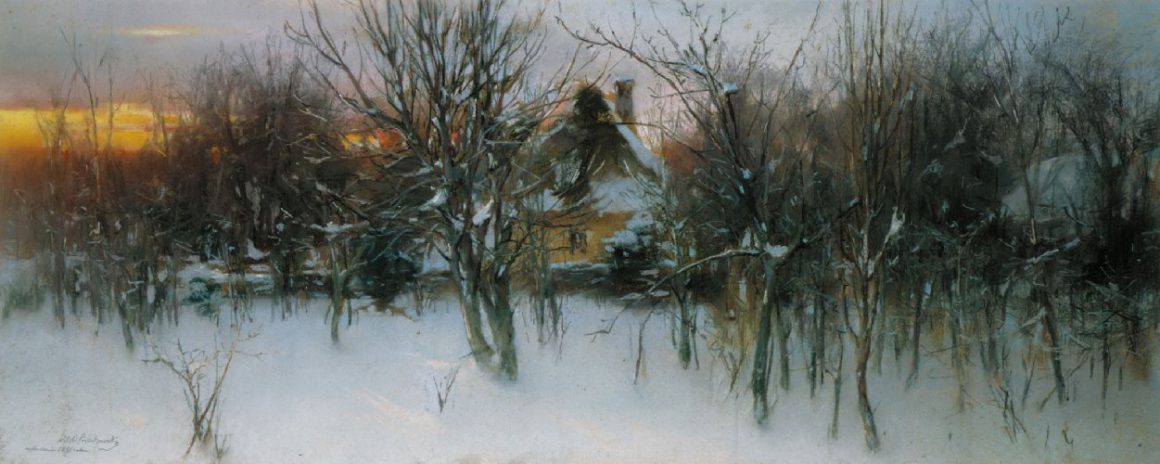Description:
Tadeusz Pruszkowski (1888-1942) studied in Paris, Munich, and the Academy of Fine Arts in Krakow. He painted moody, pastel landscapes, of which a study of an orchard at different times of day and year was repeated multiple times. In his work, he combined light and color searches with symbolism.
Tadeusz Pruszkowski painted many moody, pastel landscapes in the 1890s. Among them were studies of an orchard, in which he observed the same place at different times of day. He was regarded by contemporary critics as an innovative painter. There is no doubt that he was inspired by the painting he encountered in Paris, where he took his first lessons, which ran in the opposite order than most artists at the time. After studying in Paris, he studied in Munich, and finally ended up at the Academy of Fine Arts in Krakow. However, its director, Jan Matejko, failed to instill historicism in Pruszkowski. The artist already followed a different path.
His work ultimately took shape in an extremely eclectic way, combining Parisian experiences and light and color searches with symbolism and Polish folk culture. Fascinated by the romantic poetry of Słowacki and Krasiński, he painted fantastic figures and visionary scenes in the Polish, rural landscape.
Description of the painting:
The elongated rectangle of the painting emphasizes an invisible horizon, hidden behind the leafless winter orchard trees. From behind the branches, the buildings of rural houses are visible. Greys, whites, and browns are enlivened by the orange of the setting sun, whose band burns in the background of the composition. Dusk is already slowly reaching the foreground of the orchard, blurring the outlines of the tree trunks, giving them lightness and a sense of unreality. The blue-gray snow in the orchard does not lie on the ground, its incredibly fluffy material seems to be floating around the trees like an evening mist.


